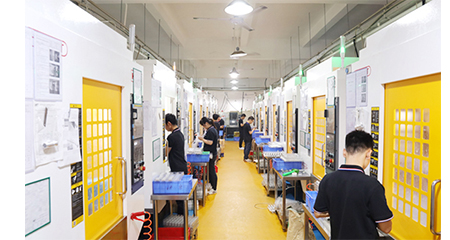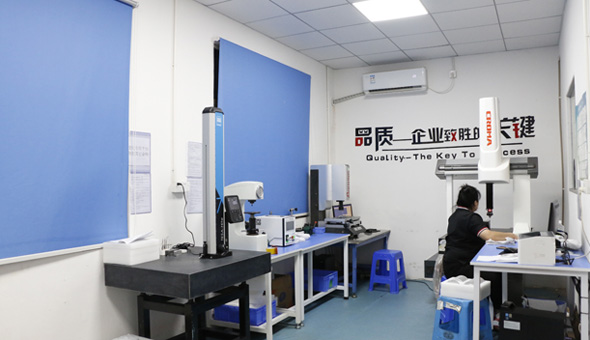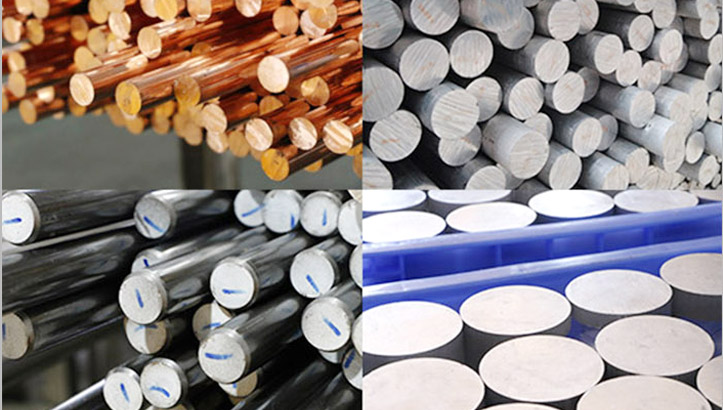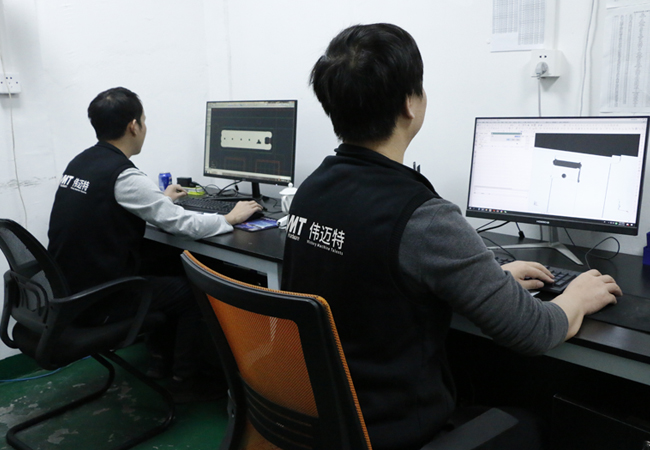What Is CNC Machining? Definition, Process, and Components
Every manufacturing challenge starts with a fundamental question: how can complex parts be produced with greater efficiency and precision? This is where CNC machining steps in as a game-changer. Yet, simply knowing about CNC machining isn’t enough—many manufacturers find themselves overwhelmed by its technical intricacies and cost considerations, leaving them uncertain about its full potential. So, how does this technology elevate modern manufacturing to new heights?
CNC machining, or Computer Numerical Control machining, is an advanced manufacturing process that uses programmed computer commands to control machine tool movements. It enables the production of high-precision parts, ranging from simple geometries to intricate designs, and is widely used in industries such as aerospace, automotive, and medical equipment.
The appeal of CNC machining extends beyond its technical sophistication—it lies in its ability to revolutionize manufacturing workflows. From traditional manual production to highly automated processes, CNC machining has transformed efficiency and product quality. Let’s delve deeper into how CNC machining works, its benefits, and its profound impact on the future of manufacturing.
What Is CNC Machining?
CNC machining, or Computer Numerical Control machining, is an automated manufacturing process that uses pre-programmed software to control machining tools. Renowned for its precision, efficiency, and repeatability, CNC machining is a cornerstone of modern industries, including automotive, aerospace, medical, and industrial equipment manufacturing. Unlike traditional manual machining, where operators manipulate machines directly, CNC technology allows for the execution of complex operations with minimal human involvement.
As a subtractive manufacturing process, CNC machining removes material from a solid workpiece using rotating cutting tools. This operation is governed by a computer numerical control system, ensuring exceptional accuracy. CNC machining encompasses a variety of techniques, such as milling, turning, drilling, grinding, and electrical discharge machining. With the capability to achieve micron-level tolerances, CNC machining has become indispensable for industries requiring the highest levels of precision and reliability.

How CNC Machining Works?
The CNC machining process begins with a digital design file, typically created using CAD software. This 3D model serves as a blueprint for the desired component. The CAD model is then imported into CAM software, which translates it into G-code—a specialized programming language that provides step-by-step instructions to guide the CNC machine’s movements. By following these precise instructions, the machine performs operations such as cutting, shaping, or drilling with unparalleled accuracy.
Key Stages in the CNC Machining Process:
1. Design Phase
Engineers develop a detailed 3D CAD model of the component, specifying dimensions, tolerances, and material properties. This design is the foundation for the entire machining process.
2. Programming Phase
The CAD model is imported into CAM software, where it is converted into G-code. This code dictates the CNC machine’s movements, including toolpaths, speeds, feeds, and cutting depths, to ensure optimal performance and precision.
3. Setup Phase
The operator prepares the CNC machine by securely loading the workpiece onto the machine bed or fixture. Appropriate cutting tools are selected and installed based on the material and machining requirements. Proper alignment and calibration are essential during this stage to avoid errors.
4. Machining Phase
The CNC machine executes the programmed operations, such as milling, turning, drilling, or grinding. As the machine follows the G-code instructions, it removes material layer by layer to create the desired shape with high precision and repeatability. Advanced machines may include real-time monitoring and adaptive controls to optimize efficiency and maintain quality.
The finished part undergoes thorough inspection using measurement tools such as calipers, coordinate measuring machines, or laser scanners. This step ensures the part meets design specifications and adheres to the required tolerances. Adjustments or refinements are made if needed to achieve the desired quality.

By integrating these stages, CNC machining provides a streamlined and automated approach to manufacturing, capable of producing complex and high-precision components for a wide range of industries.
Types of CNC Machines
CNC machines come in a variety of types, each designed to meet specific manufacturing requirements. These machines leverage advanced automation and precision to perform a wide range of operations, from cutting and shaping to grinding and electrical discharge machining. Depending on the material and the complexity of the part being produced, different types of CNC machines offer unique advantages and capabilities. Below is an overview of the most common types of CNC machines and their applications:
| Type | Description | Common Applications |
|---|---|---|
| CNC Milling Machines | Use rotating cutting tools to remove material from a workpiece. | Precision engineering, mold making |
| CNC Lathes | Rotate the workpiece while stationary tools cut and shape it. | Automotive, aerospace |
| CNC Routers | Ideal for cutting wood, plastic, and soft metals. | Furniture making, signage |
| CNC Grinding Machines | Achieve ultra-fine surface finishes through high-speed grinding. | Medical devices, precision optics |
| Wire EDM Machines | Use electrical discharge to cut intricate shapes in conductive materials. | Aerospace, tooling |
CNC Machine Programming
CNC machine programming is the process of creating precise instructions that guide the machine’s operations. These instructions are written in G-code, a specialized programming language that defines parameters such as machine movements, tool positioning, cutting speeds, and feed rates. Proper programming ensures efficiency, precision, and minimal material waste, making it a critical component of the CNC machining process.
G-code commands are essential for controlling the core machining operations. They dictate how the machine moves—whether in a straight line, arc, or complex path—and define spindle speed, cutting depth, and tool paths. Complementing G-code, M-code commands manage auxiliary functions such as coolant flow, spindle activation, and tool changes. Together, these codes enable seamless and efficient operation of CNC machines.
Modern CNC technology enhances programming with real-time monitoring and feedback systems. Additionally, integration with CAD/CAM software simplifies programming, automates G-code generation, and ensures high accuracy, even for complex designs.
CNC Machine Components
CNC machines are highly sophisticated systems composed of multiple interconnected components, each designed to fulfill a specific function in the machining process. These components work in harmony to ensure the machine can perform precise and efficient operations. From interpreting programming instructions to executing intricate cutting and shaping tasks, every part of the CNC machine is vital to its overall performance. Below is an overview of the key components and their roles:
| Component | Function |
|---|---|
| CNC Controller | Processes G-code instructions and directs the machine’s movements. |
| Spindle | Rotates cutting tools at high speeds to remove material from the workpiece. |
| Tool Changer | Automatically switches tools during machining for uninterrupted operation. |
| Worktable | Holds and secures the workpiece in place during the cutting process. |
| Linear Guides | Ensure precise and smooth movement of machine components. |
| Coolant System | Prevents overheating, reduces friction, and enhances cutting efficiency. |
What Materials Can CNC Machines Work With?
One of the greatest advantages of CNC machining is its versatility in working with a broad spectrum of materials. This flexibility allows manufacturers to produce components tailored to various industries and applications, each with unique requirements for strength, durability, and cost-efficiency. CNC machines can handle materials ranging from metals and plastics to composites and wood, making them indispensable in fields like aerospace, automotive, medical, and consumer goods manufacturing. The following is common Materials Used in CNC Machining:
-
Metals
CNC machining is highly effective for processing metals like aluminum, stainless steel, titanium, brass, and copper. These materials are often chosen for their strength, durability, and thermal resistance, making them ideal for structural, mechanical, and aerospace components.

-
Plastics
A wide range of plastics, such as ABS, PEEK, nylon, acrylic, and Delrin, can be machined with CNC technology. These materials are lightweight, corrosion-resistant, and cost-effective, commonly used in medical devices, consumer products, and electronics.
-
Composites
Materials like carbon fiber and fiberglass are frequently machined for their excellent strength-to-weight ratio and resistance to wear. These composites are popular in the automotive, aerospace, and sporting goods industries.
-
Wood
CNC machines can precisely shape various types of wood, including hardwood, plywood, and medium-density fiberboard (MDF). These materials are widely used in furniture making, cabinetry, and decorative designs.
What Are the Advantages of CNC Machining?
CNC machining has revolutionized manufacturing by offering unparalleled precision, efficiency, and versatility. Its ability to deliver consistent results across diverse materials and applications makes it the preferred choice for industries ranging from aerospace to consumer goods. Below is a detailed overview of the key advantages of CNC machining:
| Advantage | Description |
|---|---|
| High Precision | CNC machining achieves tight tolerances, often as precise as ±0.005mm, ensuring exceptional accuracy for complex designs. |
| Automation | The automated nature of CNC machines reduces the need for manual labor, lowering costs and increasing production efficiency. |
| Repeatability | Once programmed, CNC machines consistently produce identical parts, minimizing errors and ensuring uniform quality. |
| Material Versatility | CNC machining can process a wide variety of materials, including metals, plastics, composites, and even wood. |
| Scalability | CNC technology is suitable for both small-scale prototyping and large-scale mass production, offering flexibility for diverse manufacturing needs. |
Challenges in CNC Machining
While CNC machining offers a range of benefits, such as precision, efficiency, and versatility, there are some challenges that manufacturers must consider. These challenges can impact both the initial cost of adoption and the efficiency of ongoing operations. However, as CNC technology continues to evolve, many of these challenges are being addressed, helping to make the process more cost-effective and efficient over time. Below are the main challenges associated with CNC machining:
1. High Initial Cost
One of the biggest challenges with CNC machining is the high initial cost. CNC machines, especially advanced ones with specialized features, require a significant financial investment. This includes the cost of the machine itself, the software needed to run it, and the training required to operate it efficiently. For smaller businesses or startups, this initial investment can be a substantial barrier to entry, limiting access to the technology despite its benefits.
2. Complex Programming
CNC machining involves complex programming, particularly in the creation and optimization of G-code. Skilled engineers are required to translate the design into a program that the machine can execute with precision. The complexity of the code depends on the part’s design and material, which can make programming both time-consuming and prone to error if not done correctly. Improperly optimized programming can result in inefficiencies, wasted material, and increased production time.

3. Material Waste
Unlike additive manufacturing, which builds objects layer by layer, CNC machining is a subtractive process. Material is removed from the workpiece to create the final part, which often leads to material waste. This can be particularly significant when working with high-cost materials like metals. The resulting scrap material can increase production costs, making it less sustainable compared to other manufacturing methods that generate less waste.
4. Machine Maintenance
Regular machine maintenance is crucial to ensure the continued accuracy and reliability of CNC equipment. Over time, wear and tear on machine components such as the spindle, motors, and guides can lead to performance degradation. Without regular maintenance and calibration, the precision of the machine can decline, causing errors, delays, and potential downtime. Ensuring that CNC machines are properly maintained is key to avoiding costly repairs and keeping operations running smoothly.
Start Your CNC Machining Project at VMT
At VMT, we specialize in providing high-precision CNC machining services tailored to meet your specific needs. Equipped with state-of-the-art CNC machines and backed by a team of experienced engineers, we ensure your projects are completed to the highest industry standards, with tolerances as tight as 0.01mm.
With rapid prototyping services available within 24 hours and a comprehensive selection of materials, we offer fast turnaround times without compromising on quality. Contact us now for a free quote!

Summary
CNC machining is a precise manufacturing process that uses computer-controlled machines to cut, shape, and drill materials based on digital designs. It offers high precision, repeatability, material versatility, and scalability for both prototypes and mass production. However, challenges like high costs, complex programming, material waste, and maintenance requirements can affect its efficiency.
Frequently Asked Questions About CNC Machining
Which Cutting Tools are Commonly Used in CNC Machining?
CNC machining uses various cutting tools, including end mills, drills, reamers, taps, and inserts. End mills are versatile for cutting and shaping, while drills create precise holes. Reamers refine hole diameters, taps produce threads, and inserts provide replaceable cutting edges. The choice depends on material, precision, and machining speed. Carbide and HSS are common tool materials due to their durability and heat resistance.
Is CNC Machining Fully Automated?
CNC machining is highly automated but still requires human oversight. While machines execute programmed instructions with precision, operators are needed for setup, tool changes, maintenance, and quality control. Advanced CNC systems with robotic arms can achieve full automation in some applications, but manual intervention is essential for troubleshooting, adjustments, and part inspections. The level of automation depends on the complexity of the machining process and the manufacturing setup.
How can CNC Manufacturing Speed be Increased?
CNC manufacturing speed can be increased by optimizing tool paths, using high-speed cutting tools, and improving machine programming. Reducing tool change times, selecting efficient cutting parameters, and implementing adaptive machining strategies also enhance productivity. Upgrading to faster spindles, using coolant systems to prevent overheating, and leveraging automation with robotic loading can further boost efficiency. Regular machine maintenance ensures consistent performance and minimizes downtime.
What are the Main Challenges in CNC Machining?
CNC machining faces challenges such as tool wear, material limitations, programming complexity, and high initial costs. Tools degrade over time, affecting accuracy and requiring replacements. Certain materials, like hardened metals, demand specialized tools. Writing precise G-code programs requires expertise, and errors can lead to defects. Additionally, CNC machines are expensive to acquire and maintain, making cost management a key concern for manufacturers.
What are the Trends in the CNC Machining Industry?
Key CNC machining trends include automation, AI-driven programming, hybrid manufacturing, and Industry 4.0 integration. Advanced robotics and AI improve efficiency and precision, reducing reliance on manual labor. Hybrid manufacturing, which combines CNC machining with additive manufacturing, expands capabilities. The integration of IoT and real-time data monitoring enhances predictive maintenance and production control. Sustainable machining practices are also gaining traction to reduce material waste and energy consumption.



